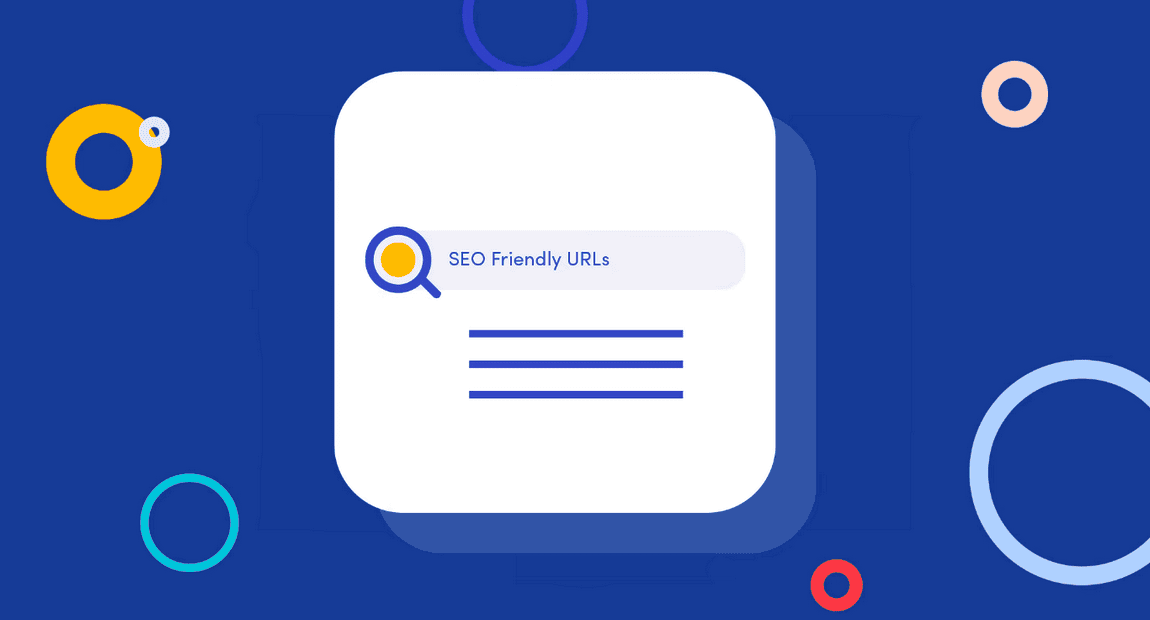When it comes to optimizing your website for search engine visibility and boosting your site ranking, SEO-friendly URL structures play a crucial role. By understanding and implementing best practices for your URLs, you can enhance the user experience and improve your chances of ranking higher in search engine results pages (SERPs).
A URL, or Uniform Resource Locator, is the web address that users enter into their browser to access a webpage. It consists of a protocol, domain name, and a path. The structure of your URL can have a significant impact on both user experience and search engine optimization. By following some simple guidelines, you can create SEO-friendly URLs that not only make it easier for users to navigate your site but also help search engines understand the relevance and context of your content.
In this article, we will explore the importance of SEO-friendly URL structures and provide you with actionable tips to optimize your URLs. Let’s dive in!
Key Takeaways:
- SEO-friendly URL structures are essential for boosting site ranking and improving user experience.
- URLs should follow a logical hierarchy and incorporate relevant keywords for better search engine understanding.
- Optimizing URLs can enhance user navigation, engagement, and overall satisfaction.
- By implementing SEO best practices for URLs, you can increase the likelihood of higher search engine rankings.
- Keywords in URLs can have some influence on search engine rankings, but their primary purpose is to enhance user experience.
What is a URL?
A URL, or Uniform Resource Locator, is the web address that you enter into your browser to access a webpage. It serves as the link between you and the content on a website. A URL consists of three main components: the protocol, the domain name, and the path.
The protocol specifies how your browser retrieves the information about the webpage, such as whether it uses “http://” or “https://”. The domain name is the unique address where a website is located, like www.example.com. Finally, the path denotes the specific location of a page, post, or file within the website.
URLs, also known as web addresses or links, play a critical role in accessing and navigating websites. They are the key to connecting users with the content they seek on the internet.
Why does URL structure matter for SEO?
URL structure plays a crucial role in SEO, benefiting both user experience and search engine rankings. By creating a well-structured URL, you can enhance the overall user experience of your website, making it easier for visitors to navigate and understand your content. Additionally, optimized URL structures help search engine bots better comprehend your website’s content and its relationship to other pages, ultimately improving your rankings in search engine results pages (SERPs).
A user-friendly URL structure provides several advantages. It enables visitors to identify the relevance and context of a webpage based on its URL, increasing their understanding of your content. This logical and organized approach helps build trust and engagement with your audience, resulting in higher user satisfaction and longer site visits.
Furthermore, URL structure influences PageRank, a ranking factor used by search engines like Google to assess the significance and value of webpages. By optimizing your URL structure, search engine bots can easily identify the hierarchy and relevance of your website’s pages, which positively impacts your PageRank and improves your chances of appearing higher in search results.
12 SEO Best Practices for URLs
Optimizing URL structures is crucial for effective SEO. By following these 12 best practices, you can enhance your website’s URL structure and improve search engine rankings:
- Follow a good URL structure: Create URLs that are logical, organized, and easy to understand. A clear hierarchy makes it easier for users and search engines to navigate your website.
- Use the HTTPS protocol: Secure your website with HTTPS to provide a safe and trustworthy experience for your users. This is also a ranking signal for search engines.
- Hide the www prefix: Remove the www prefix from your URLs to keep them shorter and cleaner. It’s unnecessary and can sometimes lead to duplicate content issues.
- Edit the page URL to be relevant: Make sure your URLs accurately describe the content of the page. Use keywords that are relevant to the page’s topic to provide clarity for users and search engines.
- Keep URLs short and simple: Shorter URLs are easier to read and remember. Aim for concise URLs that accurately represent the content of the page.
- Use meaningful keywords: Incorporate relevant keywords into your URLs to make them more descriptive and informative. Avoid keyword stuffing and keep the URLs natural.
- Use hyphens to separate words: Hyphens are recommended for separating words in URLs. They make URLs easier to read for both users and search engines.
- Eliminate stop words: Stop words such as “a,” “the,” and “and” are not necessary in URLs and can make them longer and harder to read. Remove them to create cleaner, more concise URLs.
- Use lowercase letters: Stick to lowercase letters in your URLs. Search engines treat uppercase and lowercase letters as different URLs, which can lead to duplicate content issues.
- Redirect old URLs: If you change the URL of a page, set up a redirect from the old URL to the new one. This helps maintain SEO value and ensures a seamless user experience.
- Remove dates from blog posts: If your website has blog posts, consider removing the dates from the URLs. This allows the content to remain relevant and evergreen.
- Submit the sitemap to search engines: Include your website’s sitemap in your search engine tools, such as Google Search Console. This helps search engines discover and index your URLs more effectively.
By implementing these SEO best practices for URLs, you can create user-friendly and search engine-friendly URLs that improve your website’s online visibility and drive more organic traffic.
Are keywords in URLs used for ranking?
The use of keywords in URLs as a ranking factor is a topic of debate among SEO professionals. While there is no clear answer, it is generally agreed upon that keywords in URLs can have some influence on search engine rankings. However, the importance of this ranking factor is considered to be relatively small compared to other factors such as quality content and backlinks.
The primary purpose of including keywords in URLs is to improve user experience and help users understand the content of a webpage. When users see keywords in a URL, it provides them with a clear indication of what the page is about, increasing the likelihood of them clicking on the link and finding the information they need. A well-structured and keyword-rich URL can also contribute to a positive user experience by making it easier for users to navigate a website and locate specific pages.
While keywords in URLs may not have a significant impact on search engine rankings, they can indirectly contribute to a higher ranking by enhancing user experience. When users have a positive experience on a website, they are more likely to spend time on it, engage with the content, and potentially share it with others. These user engagement metrics can signal to search engines that the website offers valuable and relevant content, potentially leading to improved rankings in search engine results pages (SERPs).
In summary, including keywords in URLs can be beneficial for both user experience and search engine rankings. While the direct impact on rankings may be small, optimizing URLs with relevant keywords can improve user engagement and satisfaction, ultimately contributing to the overall success of a website.
Can keywords in a URL increase clicks from SERPs?
The impact of keywords in a URL on click-through rates from search engine results pages (SERPs) is a complex issue. While it was believed in the past that including keywords in a URL could lead to higher click-through rates, this may not hold true in all cases. In some instances, search engines may not display the keywords in the URL at all. Additionally, other factors such as the meta title and meta description of a webpage can have a greater impact on click-through rates.
Ultimately, it is important to focus on creating descriptive and user-friendly URLs that provide a clear indication of the content of a webpage, rather than relying solely on keywords to increase clicks from SERPs. By optimizing your URLs for better visibility and user experience, you can enhance the chances of attracting clicks from search engine results pages and increasing your website’s click-through rate.
Best practices for URL structure
When it comes to structuring URLs for SEO, there are several best practices to keep in mind. By implementing these practices, you can create SEO-friendly URLs that improve user experience, enhance search engine rankings, and increase click-through rates from search engine results pages (SERPs).
- Include relevant keywords in the URL: Incorporating relevant keywords in your URLs helps search engines understand the content and context of your webpages. This can improve your website’s visibility in search engine rankings and attract more targeted organic traffic.
- Use hyphens to separate words: Hyphens are preferred over underscores or spaces in URLs as they provide easier readability for both users and search engines. For example, use “best-practices” instead of “best_practices” or “best practices”.
- Keep URLs short and clear: Long, convoluted URLs can be difficult for users to read and remember. Aim for concise URLs that accurately describe the content of the page. Shorter URLs are also more shareable and can improve click-through rates.
- Create enticing URLs: Use URL structures that are engaging and compelling for users to click on. Incorporate action-oriented words or phrases to encourage clicks and generate curiosity.
- Use lowercase letters: URLs are case-sensitive, so it’s best to use lowercase letters to avoid any confusion or errors. Consistency in letter casing also ensures a cohesive user experience.
- Avoid including dates in URLs: Including dates in your URLs can make them appear outdated and less relevant to users. It’s best to focus on evergreen, timeless URLs that remain valuable over time.
By following these best practices, you can optimize your website’s URL structure for maximum SEO impact. SEO-friendly URLs not only improve your website’s visibility to search engines but also enhance user experience, making it easier for visitors to navigate and understand your content.
Help with Navigation
Well-organized URL subfolders can greatly assist users in navigating a website and contribute to the effective organization of a website’s pages for search engine visibility. URL subfolders provide a hierarchical structure that allows users to easily understand their location within a website and quickly find the specific content they are seeking.
When URL subfolders are organized logically and intuitively, users can navigate through a website with ease, improving their overall experience. By employing a clear and intuitive structure, websites can enhance user satisfaction, encourage engagement, and increase the likelihood of users staying on the site for longer durations.
In addition to benefiting users, search engines also consider website navigation to be a crucial factor in understanding the value and relevance of its content. An organized navigation structure allows search engine bots to crawl and index website pages more efficiently, resulting in better search engine organization and improved SEO performance.
By implementing well-structured URL subfolders, websites can achieve the following:
- Enhance user experience by enabling easy navigation and content discovery
- Facilitate search engine bots in understanding and indexing website content
- Improve search engine visibility and organic rankings
Ensuring a clear and concise navigation structure that blends seamlessly with optimized URL subfolders is key to enhancing both user experience and search engine organization. By prioritizing these elements, website owners can achieve optimal SEO performance and maximize their online presence.
Conclusion
Understanding and implementing SEO-friendly URL structures is crucial for optimizing your website’s search engine visibility and user experience. By adhering to best practices such as including relevant keywords, using hyphens, keeping URLs short and descriptive, and prioritizing user experience, you can elevate your website’s search engine rankings, click-through rates, and overall user satisfaction. SEO-friendly URLs, when paired with other SEO strategies, contribute to driving organic traffic and increasing conversions for your website. Staying updated with the latest SEO trends and guidelines will ensure that your URL structures remain optimized for maximum visibility and user engagement.
FAQ
What is a URL?
A URL, or Uniform Resource Locator, is the web address that users enter into a browser to access a webpage. It consists of a protocol, domain name, and a path.
Why does URL structure matter for SEO?
URL structure plays a role in both user experience and search engine rankings. A well-structured URL improves user navigation and helps search engine bots understand webpage relevance and context.
What are some SEO best practices for URLs?
Some SEO best practices for URLs include using a logical hierarchy, incorporating SEO-friendly keywords, optimizing for user experience, and search engine bots.
Are keywords in URLs used for ranking?
While the impact of keywords in URLs on rankings is debated, they can improve user experience and help users understand webpage content.
Can keywords in a URL increase clicks from SERPs?
The impact of keywords in URLs on click-through rates is complex. While they can influence clicks, other factors like meta titles and descriptions may have a greater impact.
What are some best practices for URL structure?
Best practices include using relevant keywords, hyphens to separate words, keeping URLs short and clear, and creating enticing URLs that enhance user experience.
How do URL subfolders help with navigation?
Organized URL subfolders assist users in navigating a website and help search engines understand the organization of a website’s pages.
How do SEO-friendly URL structures boost site ranking?
SEO-friendly URL structures contribute to better search engine rankings by improving user experience, enhancing search engine understanding, and increasing click-through rates.
Why is understanding SEO-friendly URL structures important?
Understanding and implementing SEO-friendly URL structures is crucial for optimizing a website’s search engine visibility and overall user experience.





